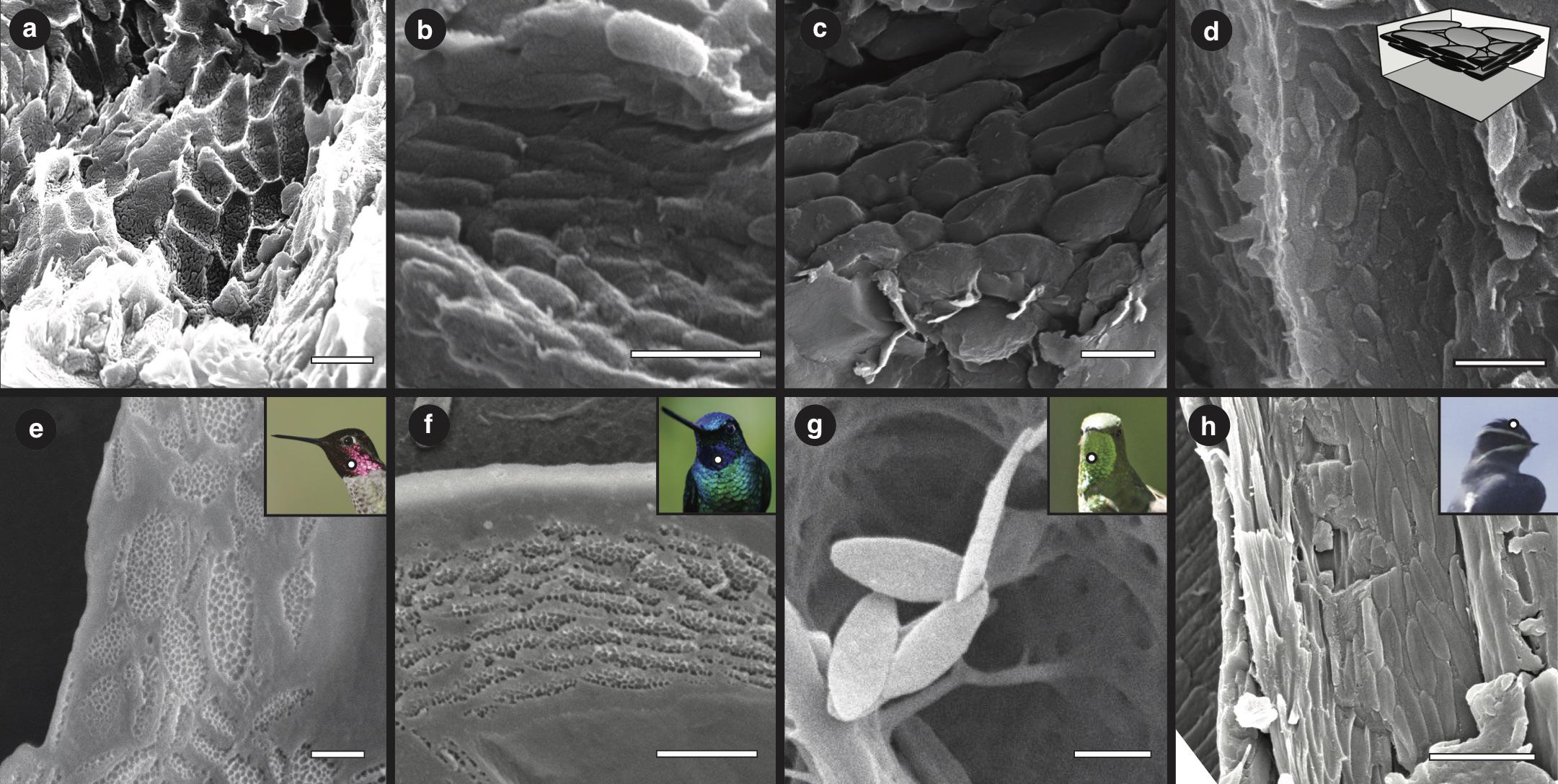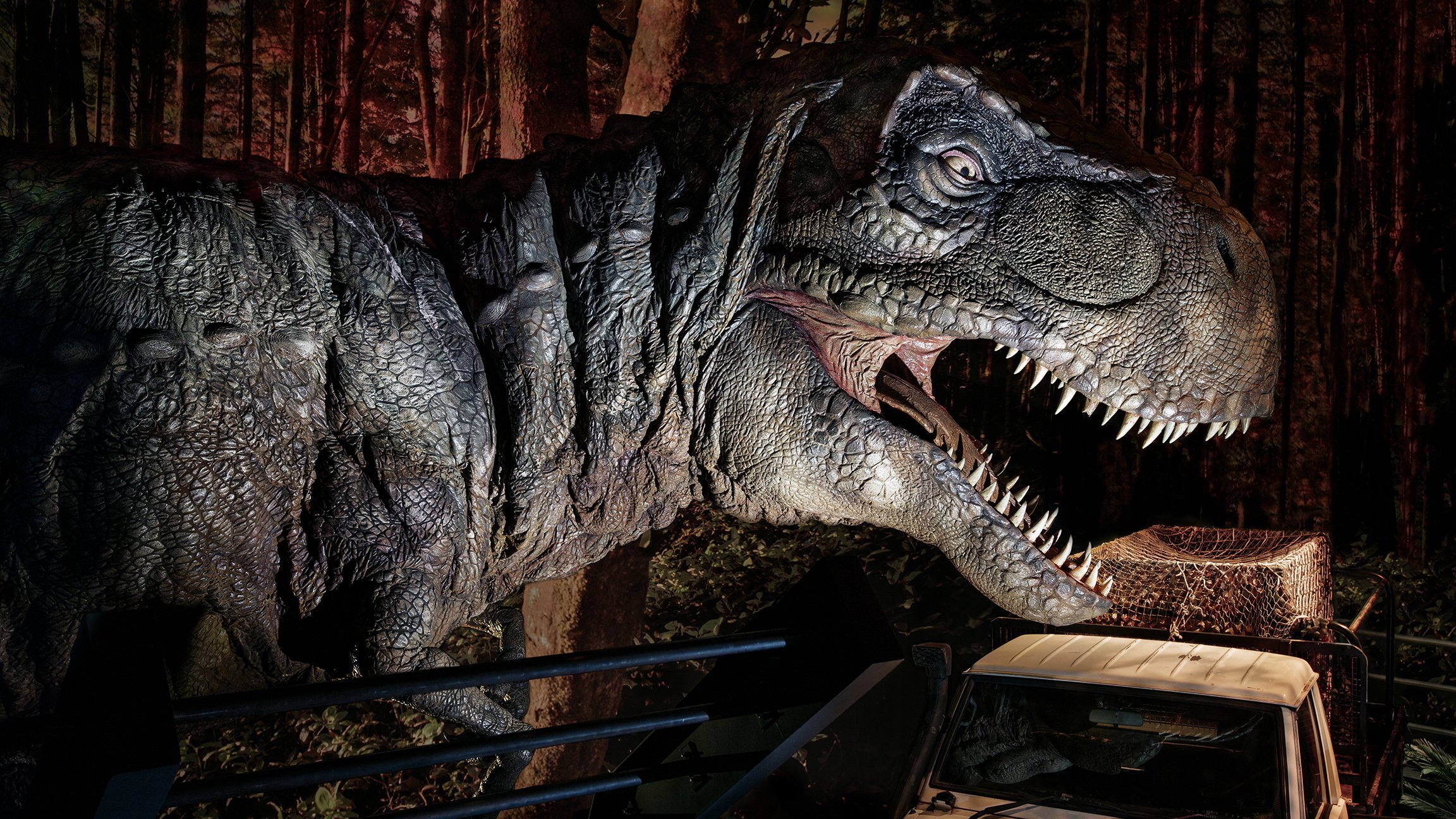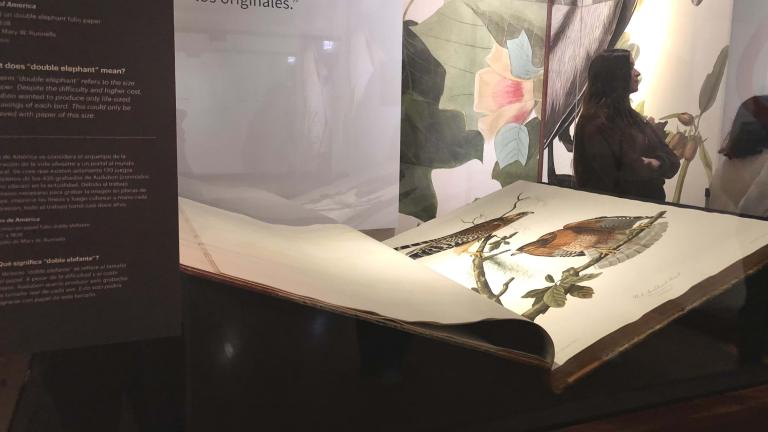 An illustration of Caihong juji, a newly discovered species of dinosaur from 161 million years ago that featured rainbow-colored feathers. (Illustration by Velizar Simeonovski / The Field Museum for UT Austin Jackson School of Geosciences)
An illustration of Caihong juji, a newly discovered species of dinosaur from 161 million years ago that featured rainbow-colored feathers. (Illustration by Velizar Simeonovski / The Field Museum for UT Austin Jackson School of Geosciences)
The colorful display of feathers common among hummingbirds has roots in a bird-like Chinese dinosaur from 161 million years ago, a new study finds.
Scientists on Monday announced the discovery of a duck-sized dinosaur with shiny, multicolored feathers that lived in northeastern China during the Jurassic Period. The new species – called Caihong juji, Mandarin for “rainbow with the big crest” – is described in a study published by an international team of scientists, including Chad Eliason, a postdoctoral researcher at The Field Museum.
The dinosaur’s rainbow feathers might be a prehistoric version of a peacock’s multicolored tail, one example of colorful plumage used by modern birds to attract mates.
“When you look at the fossil record, you normally only see hard parts like bone,” Eliason said in a press release about the study, published Monday in the journal Nature Communications. “But every once in a while, soft parts like feathers and preserved, and you get a glimpse into the past. The preservation of this dinosaur is incredible, [and] we were really excited when we realized the level of detail we were able to see on the feathers.”
 A newly discovered dinoaur species had rainbow-colored feathers similar to those of a hummingbird, according to a new study. (Heather Skeen / The Field Museum)
A newly discovered dinoaur species had rainbow-colored feathers similar to those of a hummingbird, according to a new study. (Heather Skeen / The Field Museum)
Painting a picture of the dinosaur’s feathers was not possible upon first look, however.
While examining the feathers under a powerful microscope, researchers found that for the most part, the pigment that was once present was long gone.
But the physical structures of the pigment-containing cells were still intact, allowing researchers to compare their shape to other species.
Eventually, they matched the pancake-shaped cells from Caihong with the shapes of cells in birds alive today. The best match turned out to be hummingbirds.
“Hummingbirds have bright, iridescent feathers – but if you took a hummingbird feather and smashed it into tiny pieces, you’d only see black dust,” Eliason said. “The pigment in the feathers is black, but the shapes of the [cells] that produce the pigment are what make the colors in hummingbird feathers that we see.”
 Researchers compared the imprints of pigment-containing cells to discover that a newly discovered dinosaur species had rainbow-colored feathers similar to those of a hummingbird. (Courtesy The Field Museum)
Researchers compared the imprints of pigment-containing cells to discover that a newly discovered dinosaur species had rainbow-colored feathers similar to those of a hummingbird. (Courtesy The Field Museum)
Birds evolved from small feathered dinosaurs from the Jurassic Period, such as Caihong.
In addition to being the oldest example of a species with rainbow feathers, the newly discovered dinosaur is the earliest known animal with asymmetrical feathers, a feature that allows modern birds to steer or turn while flying.
Caihong, however, could not fly. The dinosaur’s asymmetrical feathers were on its tail – as opposed to on the wingtips – and were primarily used to keep warm, the researchers found.
Along with Eliason, the study was conducted by Quanguo Li of the China University of Geosciences in Beijing and Matthew D. Shawkey of the University of Ghent in Belgium.
Contact Alex Ruppenthal: @arupp | [email protected] | (773) 509-5623
Related stories:
 Photos: World’s Largest Dinosaur Coming to Field Museum
Photos: World’s Largest Dinosaur Coming to Field Museum
Sept. 1: Chicago’s iconic T. rex Sue will get a makeover when the largest dinosaur ever discovered comes to town. Stretching 122 feet from snout to tail, the titanosaur is longer than two accordion CTA buses end to end.
 Large-as-Life Dinosaurs Frighten and Fascinate at ‘Jurassic World’
Large-as-Life Dinosaurs Frighten and Fascinate at ‘Jurassic World’
May 31: A new exhibit aims to be an immersive experience that brings the 2015 movie and its gigantic reptilian stars to life.
 Scientists Discover Early Dinosaur ‘Cousin’ with Surprising Features
Scientists Discover Early Dinosaur ‘Cousin’ with Surprising Features
April 13: A Field Museum researcher is among a global group of scientists who have discovered an early dinosaur that reshapes our understanding of dinosaurs’ evolution.








